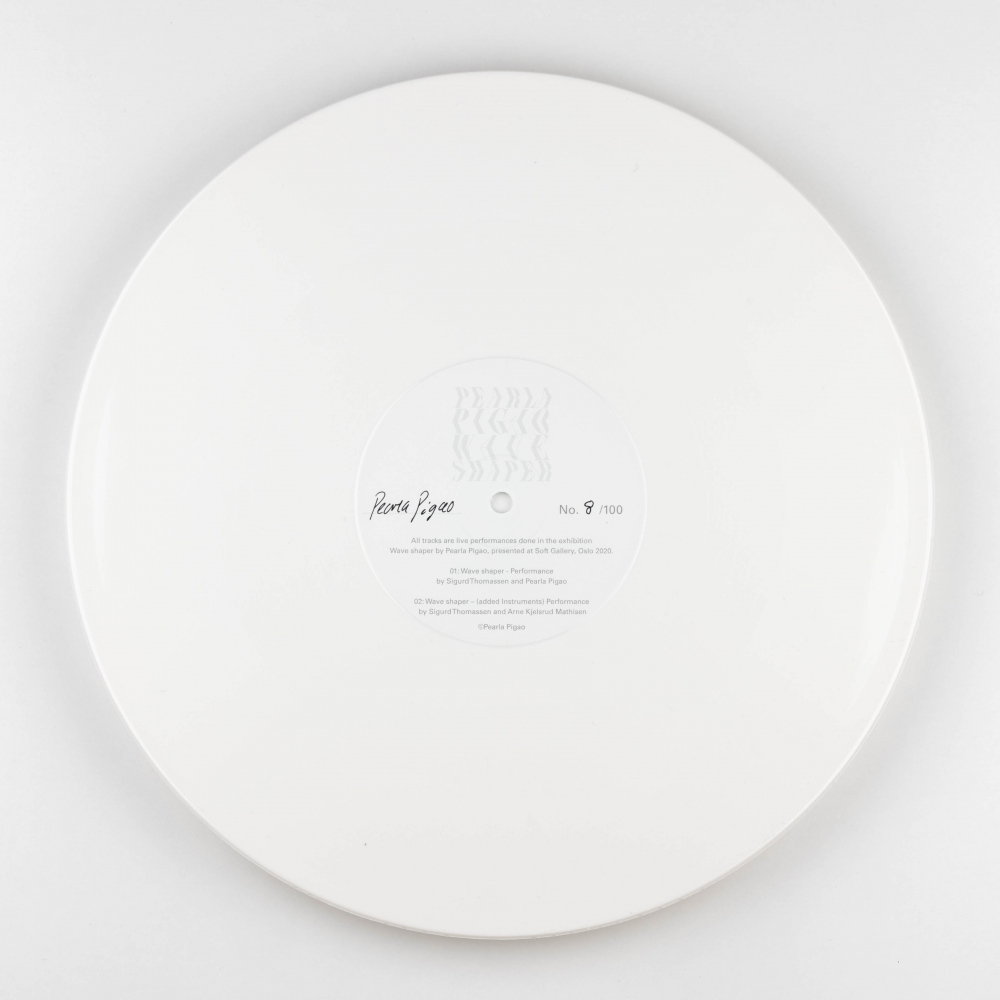-
LP from the work Wave Shaper first presented at Soft gallery in Oslo January 2020. The LP is printed in only 100 copies and is numbered and signed. The release contains two live performances where one is played only on the installation itself by Pearla Pigao and Sigurd Thomassen (page A), page B is a longer improvised concert performance by the musicians Arne Mathisen and Sigurd Thomassen. In addition to the installation, they have added guitar, synth and drum machine.
The record can be purchased at Kunstnerforbundet Oslo, Soft galleri's webshop, Trondheim kunsthall or send an email to pearlapigao@gmail.com.
Note: Only a few copies left. -
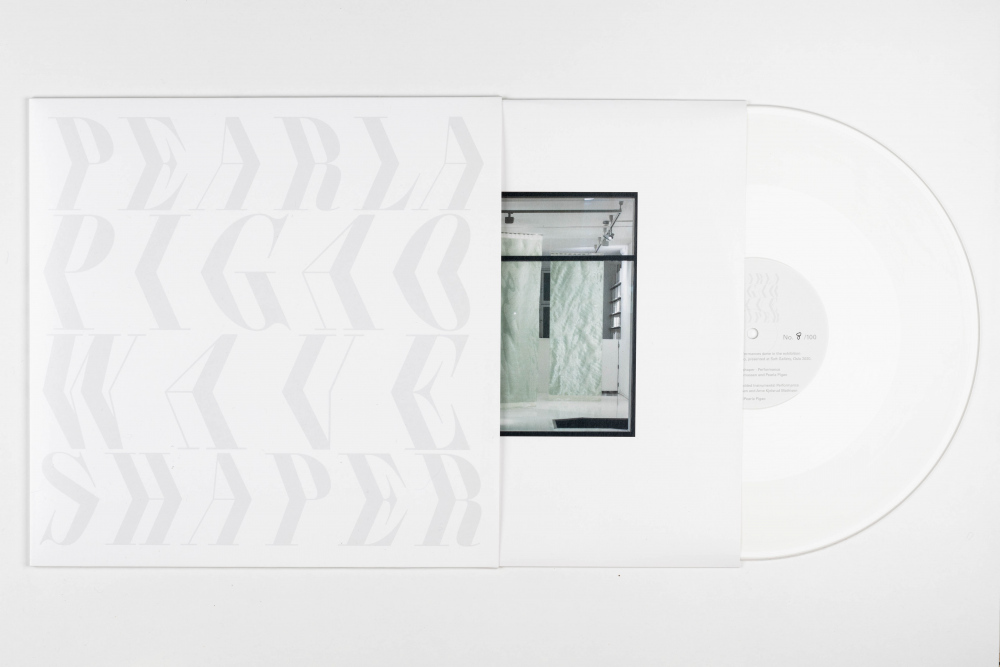
-
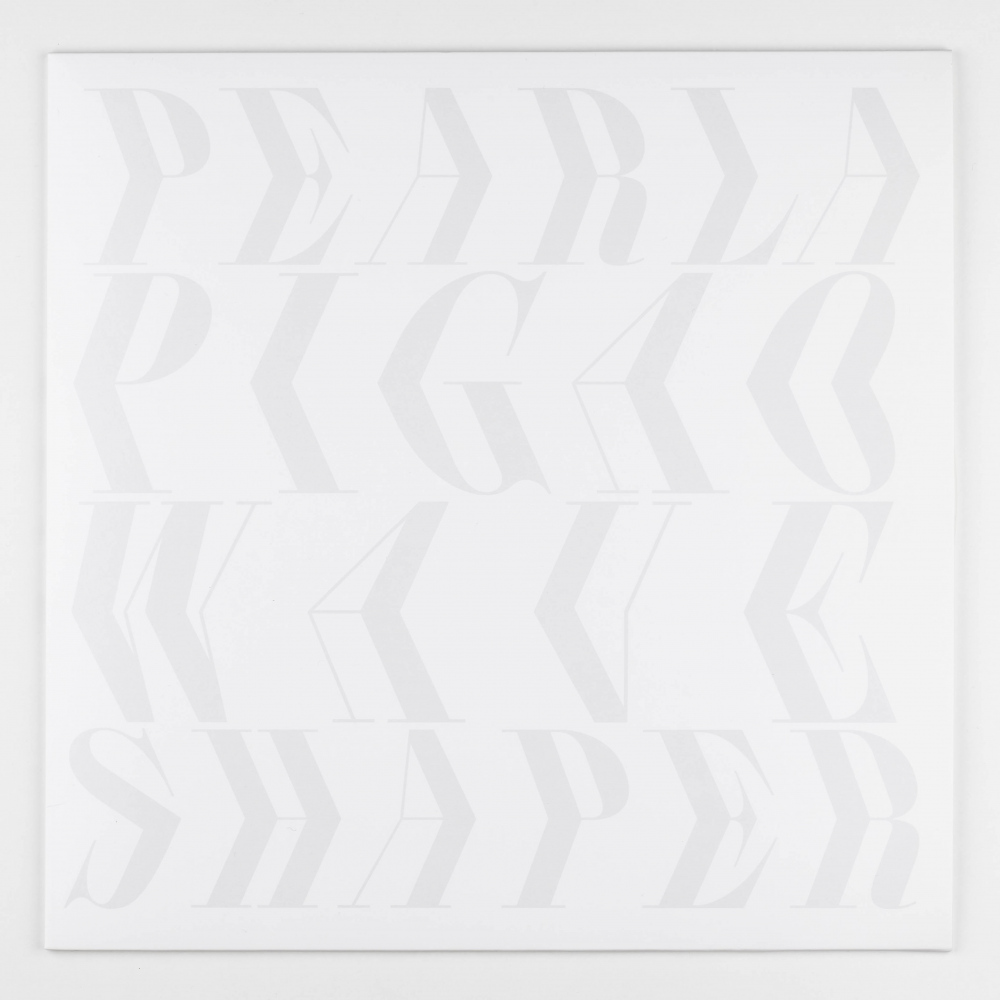
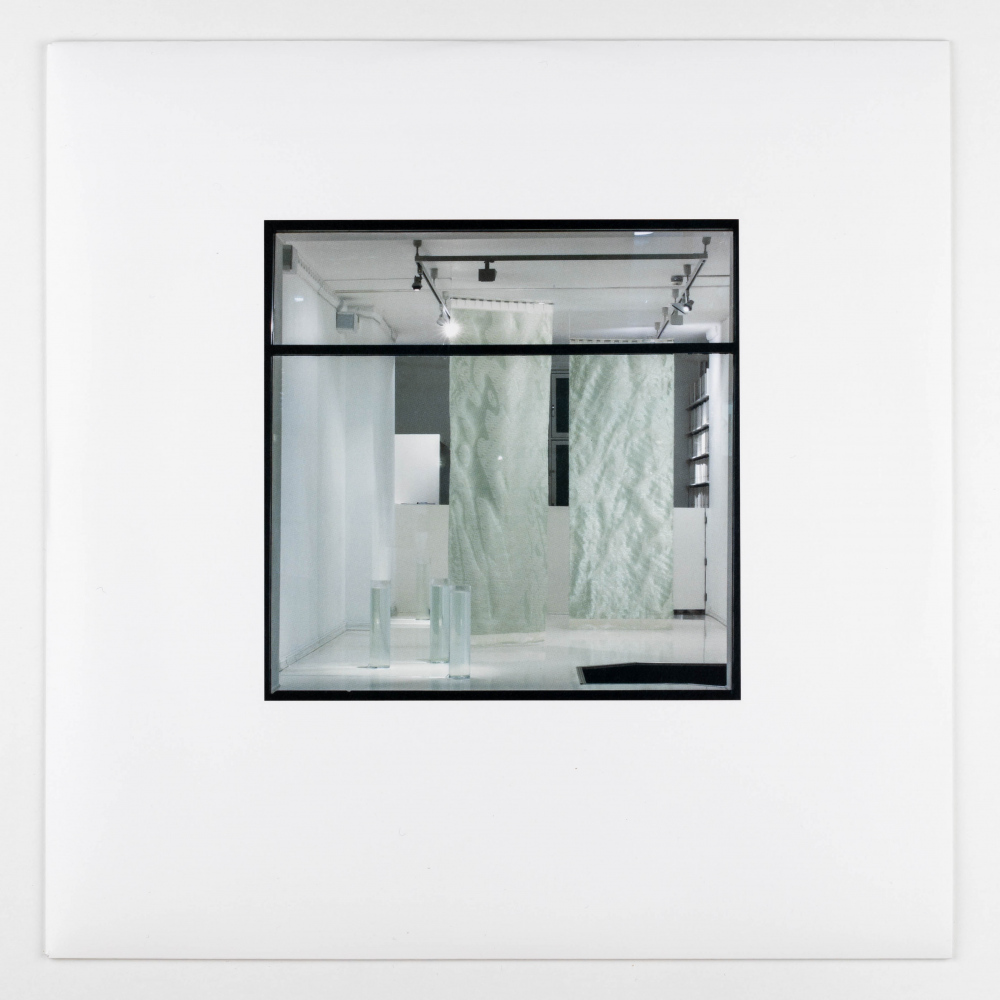
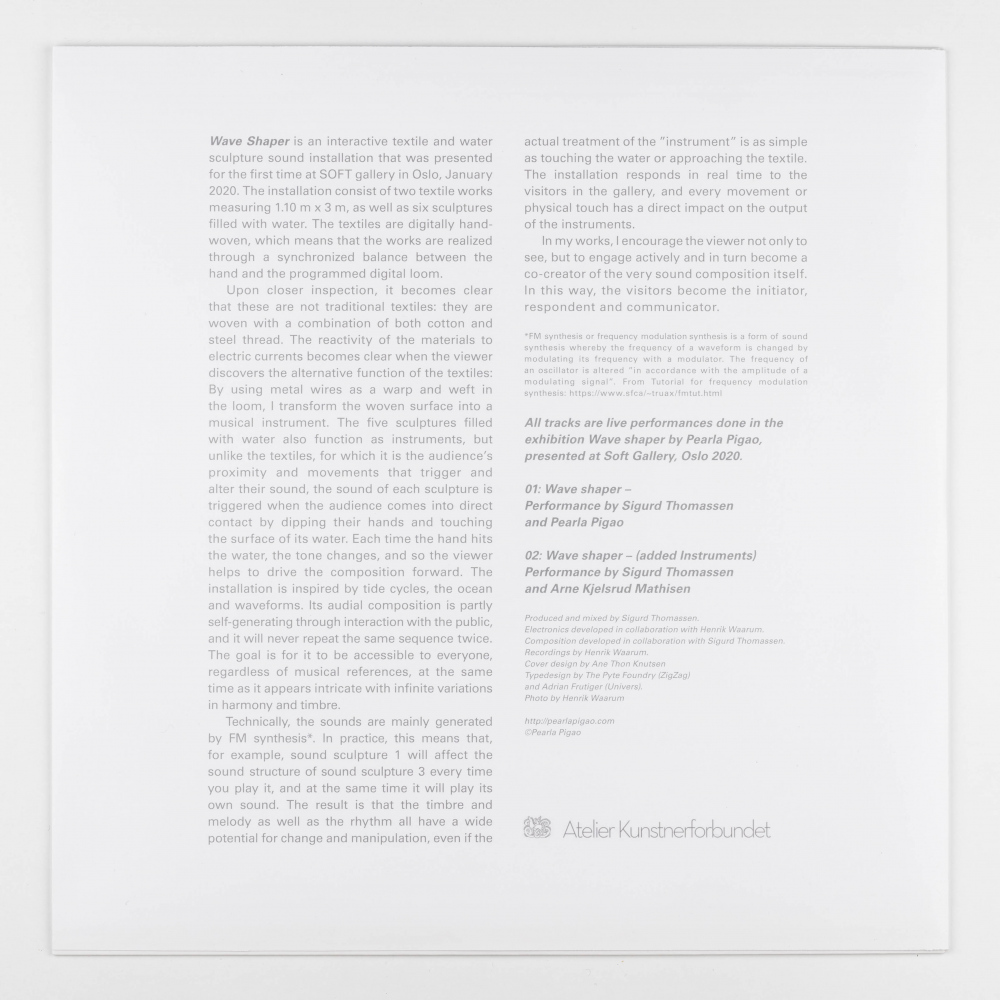
-
Waves and Scalesby Line Ulekleiv
Imagine a textile surface that creates sound. Enveloping the space like a billowing tone as you approach — first discreetly, then more insistently. The sound turns, increases and lessens again. It is warm, lively and clear as if emanating from a harpsichord.
Pearla Pigao’s finely attuned and sonorous body of work examines music and sound materialized in digitally designed and thereafter manually woven textiles. There are similarities to be found between the digital design of the textile surface and musical composition, and Pigao, who has a background as a musician, spins sound from the moment. She inflects her textiles with resonant intention, based on knowledge and an ear for sound. Technology and weaving have an alliance, for example through the punch cards that inform the jacquard loom, which revolutionized the weaving industry during the 19th century. Binary structures are part of the logic of weaving, making the loom a precursor of the computer. There is a continual translation and transcription in Pigao’s work, between hand, tradition and digital technology.
Thread as medium, body as catalystCopper thread woven into the textile transports sound through a circuit, where the musical composition is created by each spectators’ movement. Metal threads were used in weaving and embroidery in ancient times, as a method of catching light that allows for shimmering, playful surfaces. In Pearla Pigao’s work each thread is a live antenna for interaction. As if by pure magic sound envelopes visitors, who affect the textiles without touching them. Each textile can be thought of as a receptive instrument that extends into the surrounding space, a contact surface directly affected by each audience member’s body. The presence of bodies determines the frequency and character of the sound; each person becomes a field of energy that generates a specific acoustic image. The physically and mechanically triggered composition allows for individual variations, flowing between air-streams and tonal possibilities. Sinus (2O17) was first shown as part of the degree show for the Art and Craft Department at The Oslo National Academy of the Arts. It is a precise piece, where copper thread is woven with cotton into two large textiles hung opposite one another, creating a corridor between them. The colour is a delicately shimmering peach pink, like a sunset. White fringes hang at the end of each textile. Pigao’s piece is inspired by one of the earliest electronic instruments, the theremin, constructed around 192O by the Russian physicist Leon Theremin (1896 –1993). Here, scientific experimentation meets musical demands.
The musician induces air vibrations between two electrodes, without direct physical contact. The vibrating soundscape is commonly referred to as «the music of spheres», expressing early modernity’s link between science and esoteric thinking — one could imagine the theremin as Madame Blavatsky’s chosen soundtrack. With her hyper-sensitive textiles Pigao activates a soundscape similar to the theremin, but with an updated and contemporary resonance. Sound filtered through craft as form and agency.
Soundscapes in motionThe auditory component in Sinus was developed by electronics developer Henrik Waarum, whom Pearla Pigao has collaborated continuously with. The sound can be experienced within a given register, with minimalist undertones. Every once in a while, it takes on the characteristics of a slight howl — but without shrillness. The soundscape triggers a rigid melancholy. A sinus tone, the phenomena referenced in the title of the piece, is a completely unitary tone, in other word sound waves with a frequency exactly matching the sinus curve. In Pigao’s work the auditory, visual and interactive are treated equally. Each mode of expression overlaps with the others, seemingly insistent that the translation from one expression to the other is never fully consummated. The performative lends an extra dimension, by inviting collaborators to act alongside the work. During Pigao’s degree show, musicians (contrabass, violin) improvised alongside Sinus. When the piece was shown in the assembly hall in Design Museum Denmark during CHART 2O18, a rhythmic and meditative dynamic was achieved in a performance with DeLeónCompany. In a choreography were movement generated sound, three dancers played a musical composition through partially improvised gestures. The sonic was physically manifested in gliding movements, musically sensitive and precise. The dancers moved under, behind and in front of the textiles, which were held carefully or used as percussive instruments. Hands were angled towards the surface — gestures stylized like in Egyptian hieroglyphs. As if in a world of shadows, the textiles sometimes hid the dancers as they moved between laying on the floor and standing. An atmospheric wave in the room was concentrated in the ripples of the textile surface.
Modes to Moods
Pearla Pigao’s exhibtion Modes to Moods at Atelier Nord invites a more experimental soundscape, more synthesizer-like than previous projects. It also emphasizes her interest for the visual. Here, she shows textile sculptures where lights are integrated in the frame, activating the reflective properties of steel and copper threads. As in her previous project, Sinus, technology and craft provide the foundation. The mood scales that the work references, explore different states of mind, how they occur and how they are expressed. The combination of light and sound is based on modes, a collection of scales closely aligned with each other that share the same seven tones. By varying the base tone, the placement of whole and half steps is «displaced», giving each scale a distinct sound. Such scales were the basis for religious music in the Middle Ages and the Renaissance and are important in many folk music traditions. In Modes to Moods, Pigao makes use of scales together with frequencies and filters patched together through a modular synth, as the
basis for the exhibition’s soundscape.
Pigao’s work allows for interaction and auditory undercurrents, as the sound is affected by people moving in the exhibition space. Several people need to be present for the volume to increase, and for the light to intensify. Participation also includes the sculptures, veritable instruments played by bodily difference and distance. The scales are pre-programmed, but the sensory involvement of the spectator makes the whole thing ripple. A scintillating feeling upheld by structure, like a crest of foam — complex, yet simultaneously accessible. -
